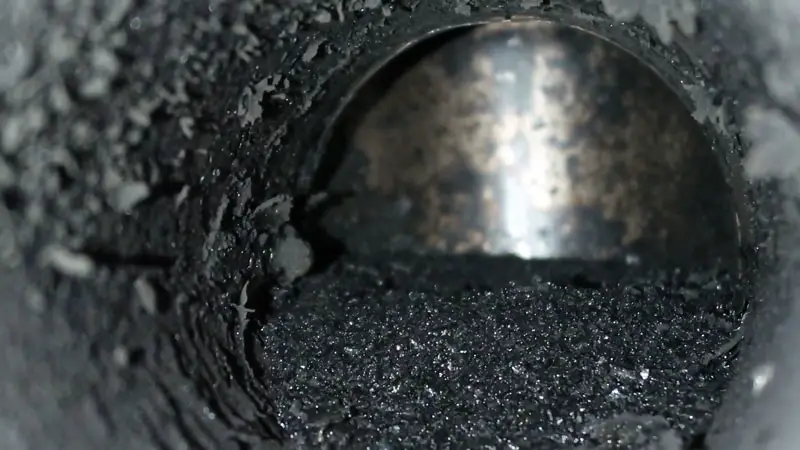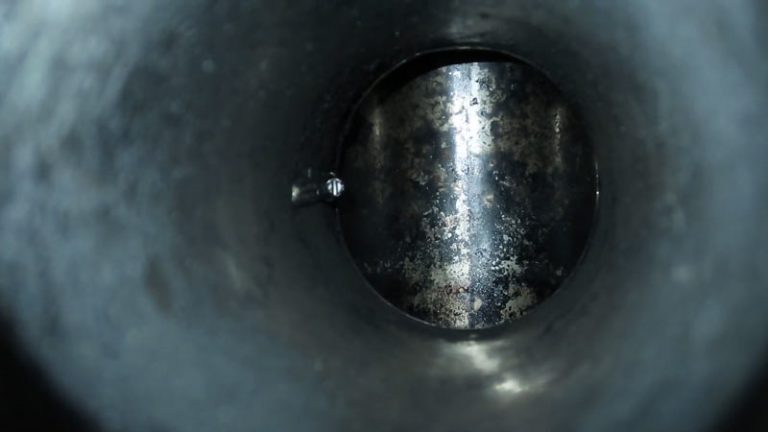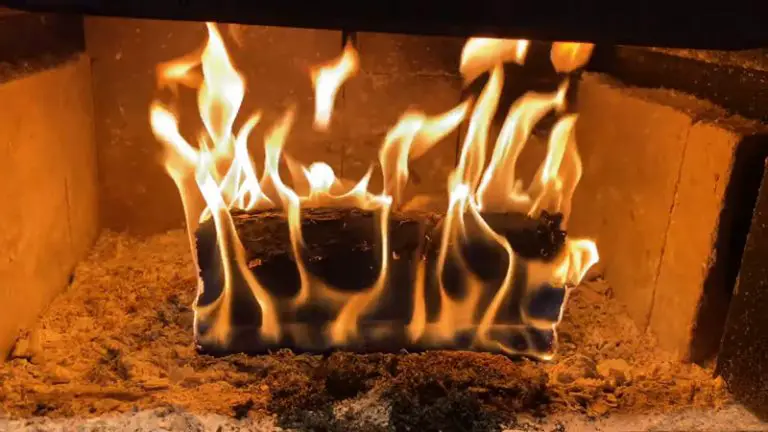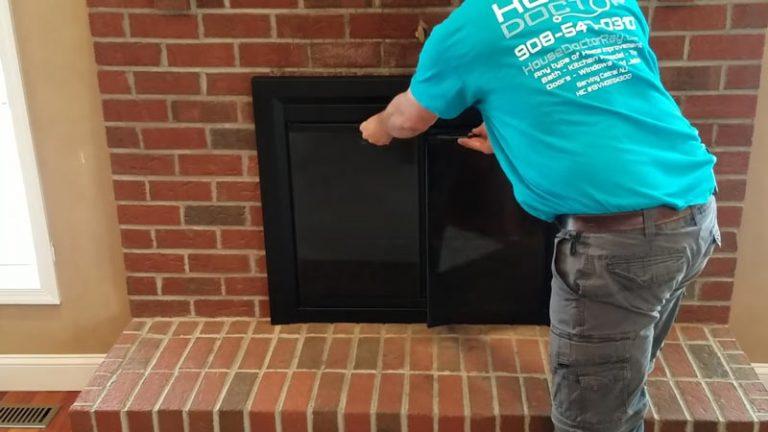What Does Creosote Look Like

If you live in a home that was built before 1986, it’s likely that the wood-burning fireplace used creosote as a fuel source. Creosote is harmful to your home and can form dangerous tar deposits on walls and ceilings if not properly cleaned up after use.
You can remove creosote yourself by using an appropriate cleaner or sanding compound; just be sure to wear protective gear and avoid breathing in the dust particles created during the removal process.
If you experience any problems with your wood-burning fireplace, such as black soot or creosote buildup on surfaces, get help from a professional immediately. Remember: prevention is always better than treatment.
You'll Learn About
What Does Creosote Look Like?
Creosote is a harmful byproduct of wood-burning fires. You can remove creosote yourself if necessary, but be aware that it can damage your home further.
Protect your home against future damage by keeping all burning materials contained to the fire pit or grill at all times and make sure any flammable objects are properly disposed of in accordance with state regulations.
If you experience problems caused by creosote, get help from an expert as soon as possible before the situation gets worse or causes long-term damage to your property.
Black, Tar-like Substance
Creosote is a black, tar-like substance that can be poisonous and flammable. It can be found in black or brownish-black liquid form and has a pungent smell. Creosote is used as fuel for burning coal or wood without enough air, often causing black smoke to billow out of the chimney.
The substance appears as a dark color and has a characteristic odor that some people find unpleasant. Creosote is the waste product of coal-tar distillation. It is a by-product of the tar-making process that is not used for its intended purpose.
It is produced as a waste product and is one of the highest volume solid waste products generated in the United States. Creosote is not to be confused with coal tar, which is a lighter-colored tar product used to produce asphalt.
Creosote Forms From Wood-Burning Fires
Creosote is a black, tar-like substance that forms from the burning of wood. It can be dangerous if it gets on your skin or enters your lungs. If you see creosote around a fire, make sure to report it to authorities immediately so they can put out the flames and prevent any potential damage.
Creosote accumulation in homes caused by wood-burning fires is becoming more common as stricter environmental regulations are implemented nationwide. There are some tips you can follow to help reduce the risk of experiencing this issue: using certified wood, planning for proper ventilation when starting a campfire, and being aware of local bans on open burning
Creosote Is Harmful To Your Home
Creosote is a brown or black liquid that comes from wood products such as lumber, paper, and cardboard. It can cause damage to your home if it’s not properly treated or contained.
Signs of creosote damage include discoloration, warped boards, and sagging ceilings/walls. If you see any signs of the problem, contact a reputable professional immediately to get started on cleanup and restoration services.
Make sure to keep your windows closed during extreme weather conditions (such as cold snaps) in order to prevent moisture from entering your home through cracks in the foundation/masonry
You Can Remove Creosote Yourself
If you have a clogged drain or pipe, don’t call a professional. Creosote is a natural by-product of the burning process and can be removed at home using common tools.
Follow these simple steps: Clear any debris from around the creosote spot with a broom or vacuum cleaner Pour boiling water onto the area to create steam Use an adjustable wrench to turn the bolt until it pops off – remember to wear gloves.
Grab hold of the old rusted fitting and pull it out – if there’s any residue left on it, use tongs to grab hold of that too and shake it off before discarding. Repeat Steps 1-3 as necessary in order to completely remove all traces of creosote from your plumbing system.
Protect Your Home Against future Damage
Creosote is an oily, black substance that forms on the surface of the wood when it’s exposed to the elements. The National Fire Protection Association (NFPA) recommends using creosote-treated wood in areas where high heat and humidity are present.
Damage from creosote can be prevented by protecting your home against future damage with proper maintenance and repairs are done correctly If you do see signs of damage or decay, don’t wait – call a professional immediately. Don’t let creosote ruin your beautiful home – take preventive steps today.
Get Help If necessary
Creosote is a black or brown tar that forms on the inside of logs and other hardwood products when they are dried out. Creosote can cause serious health problems if it’s breathed in, ingested, or comes into contact with skin.
If you think you may have come into contact with creosote, get help right away. The National Fire Protection Association (NFPA) recommends removing any affected materials from your environment as quickly as possible to limit the spread of creosote fumes and smoke.
What does Glazed creosote look like?
Glazed creosote is a type of wood that has been treated with a chemical mixture. This treatment makes the wood look like it’s covered in a layer of glaze.
- Glazed creosote is a type of tar that becomes hardened and forms into gels when it’s exposed to the elements. This substance can be found in levels 2 and 3 on the National Fire Protection Association (NFPA) scale, which means that it poses a significant fire hazard.
- It’s important to remember that removing glazed creosote requires special equipment and care. Levels 2 & 1 creosote are easier to remove than level 3 Creosote but still require some effort and know-how. If you’re not prepared for this task, you may end up causing more damage than good by trying to remove it without proper preparation.
- Glazedcreosote can be easily removed by hand if proper preparations are made prior to removal. However, if levels 2 or 1 creosote is present, special equipment such as an acetylene torch or heat gun will need to be used in order to safely break down the hard compounds so they can be cleaned away.
How can you tell if wood is creosote?
Creosote is a dangerous wood treatment that can cause health problems if not properly handled. You may be able to smell creosote toxins from the wood – if so, take appropriate precautions.
Look for brown spots or ridges on the wood surface and check the condition of your doors, windows, and fireplaces to see if they are in need of repair or replacement due to creosote exposure.
If you suspect that your wood has been treated with creosote, get professional help before it causes any further damage. Always use caution when working with any type of wooden material – even those that seem safe.
Will a hot fire burn off creosote?
Creosote can build up in your chimney and cause a fire risk. You need to remove creosote before a hot fire burns it off, as this can fail and lead to serious consequences.
Make sure your stove is properly maintained so that the risk of a creosote buildup is minimized. Keeping an eye on your chimney & making regular cleanings will help prevent any issues from arising in the first place.
Finally, make sure you know how to safely handle a hot fire if one does occur-prevention is key.
Is creosote shiny?
Creosote is a by-product of wood burning and can be found on the walls of your fireplace, around the chimney area, or even on the roof if you have firewood storage shed.
It can be crusty, flaky, drippy, sticky, shiny, or hard–depending on how much moisture it has collected over time. You’ll usually notice creosote when cleaning up after your fire; it will form as a residue from the burning of wood and may require scrubbing with soap and water to remove completely.
If you experience any issues with creosote buildup (e.g., difficulty breathing due to an excessive amount), please call a professional who will be able to assess what needs to be done in order to remediate the issue.
What does Stage 1 creosote look like?
Stage 1 creosote is a colorless, liquid form of tar that forms on the surface of the wood when it’s exposed to the elements. Creosote can be caused by a number of factors, including water damage and improper storage.
When left untreated, creosote will cause your wood to rot. Creosote is a toxic and flammable substance that forms when coal is burned in an incomplete or improper way. This build-up can cause your chimney to become clogged and unusable, which may lead to serious health risks if not addressed immediately.
If you see dust-like substances building up on the inside of your chimney, it’s important to take action right away. This indicates that creosote has started to accumulate and this could be a sign that damage is already underway.
Cleaning and maintenance services are available to help reduce the risk of creosote damage in the future but should be undertaken as soon as possible for maximum effectiveness. A chimney with a loose cap can also let water into the flue and this can cause the flue to rust over time.
Once this happens, the flue can no longer safely expel smoke and you’ll need to replace the chimney. The chimney will also need to be professionally cleaned if it’s clogged with soot and ash.
A well-maintained chimney should be inspected every three to five years, depending on the use of the chimney. Chimney inspections are best undertaken by a professional who is trained to do so.
How do you keep creosote from building up your chimney?
Creosote build-up can reduce the efficiency of your chimney and increase your overall carbon footprint. To keep creosote from building up, maintain a briskly burning fire with dry well-seasoned wood, exceeding 250 degrees Fahrenheit in the flue, and use an EPA-certified creosote control product if necessary.
Keeping the flue temperature above 250 degrees Fahrenheit will also help to prevent creosote build-up.
Will vinegar dissolve creosote?
There is some debate over whether or not vinegar can dissolve creosote. However, if you are concerned that it might be a contributing factor to your car’s smoke smell, then you should try mixing 1 cup of white vinegar with 5 gallons of water and spraying the solution all over the engine.
Let it sit for 24 hours before rinsing off.
Creosote Build-Up
Creosote is a byproduct of burning fuel and can build up on surfaces over time. This buildup can cause your wood or metal to rot and ultimately damage the structure of your home. Vinegar will help dissolve this creosote, which means that it’s safe to use it in affected areas.
Just be sure to wait for the vinegar to work its magic before you proceed with any cleaning efforts.
Vinegar Will Dissolve Creosote
The acidity in vinegar is what makes it effective at dissolving creosote and other types of grease deposits. Simply pour some vinegar onto the surface that needs cleaning, let it sit for a few minutes, then rinse off the residue safely with water.
Keep an eye on areas while you’re working so you don’t spread the damage farther than necessary.
Wait for the Vinegar to Dissolve The Creosote
While vinegar will do a great job of removing creosote from surfaces, it won’t work if there are any remaining chunks or pieces of creosote left behind (this is why waiting until all traces of creosote have been eliminated is important). Letting the mixture soak overnight usually results in the complete removal of the Creosote without further incident.
Why My New Fan Clutch Not Engaging?
To Recap
Creosote is a brown or black liquid that can be found in wood preservatives. It may cause skin irritation and respiratory problems when breathed in, so it should not be used near the home’s indoor air quality or ventilation systems.





